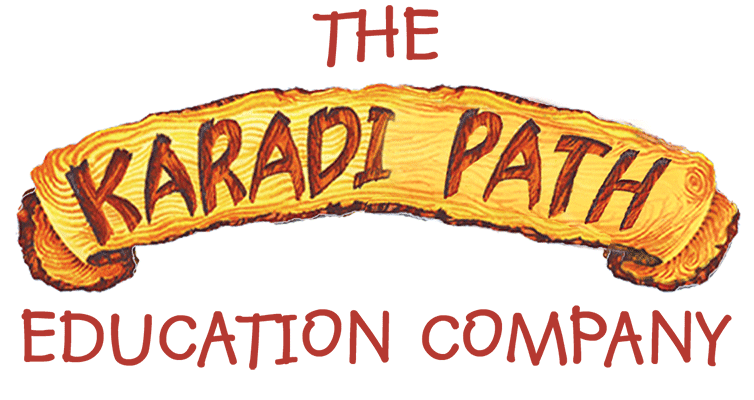
The Karadi Path methodology is an award-winning innovation in education that creates an immersive English language environment in classrooms. Its non-linear and non-instructional approach allows children to learn English by discovery, by intuition, and by sensory engagement. Children derive English the same way they pick up their mother tongue or any other language from the environment. For this to happen, stimulating story-based and functional contexts are created in the classroom.
The Karadi Path method can be described as:
Intuitive: Uses intuitive intelligence (right-brain oriented) over logical intelligence (left-brain oriented) – the intelligence with which we learn to walk, learn our mother tongue and learn to sing.
Immersive: Creates a rich immersive language environment in the classroom through various modes.
Non-linear: Provides multiple paths to the goal of language learning allowing every individual learner to use his or her preferred way of learning.
Non-instructional: All learning is delivered experientially without any instructions and without explaining meanings of words or phrases.
Multi-sensorial: Learning language through listening, seeing and doing with a high focus on listening.
Multi-modal: Learning language through multiple modes such as physical activity, music and stories.
The Karadi Path methodology comprises of four modules, Action, Music, Reading and Story and integrates features of theatre to capture the elements of natural language acquisition
Learn English grammar using body movements
Action Path is a kinesthetic module where body movements and expressions are used to acquire language patterns.
It helps:
• Build phraseology and elementary vocabulary.
• Lay the foundation for speech and writing.
• Internalise sentence constructions without any formal introduction to grammar.
Make language patterns stick in your head with music memory
Music Path is a module that integrates music-memory with language learning, using scientifically scripted songs set in an Indian milieu.
It helps:
• Tune the ear to absorb specific language elements
• Use music as a springboard for pattern-recognition and simple conversations.
Build reading with touch, sight and sound
Reading Path is a multi-sensory reading module that introduces the basic phonetic sounds of the English language and builds sight-word recognition.
It helps:
• Develop phonetic reading using the unique Tarjani Tactile Reading Workbook.
• Visually reinforce the shapes of letters and words with their associated sounds.
• Reading fluency by transitioning to reading by sight and contextual prediction.
Immerse in talking books to build deep ties with language
Story Path is an immersive module which creates a gripping story listening experience with exciting visuals, rich narratives and an evocative soundtrack.
It helps:
• Develop prediction skills to derive language from context.
• Promote reading comprehension and critical thinking.
• Build a theatre experience through expressive reading, miming, conversations and skits.






